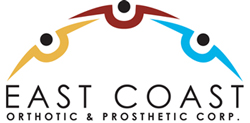East Coast Orthotic & Prosthetic Corp. was profiled in the August 17th, 2015 print edition of NY Newsday newspaper. Specifically, the newspaper looking at how our company’s investment in technology, including the Ortis robot system.
Below is the story from Newsday.com, along with an accompanying video here. (To view a PDF of the Newsday article, please click here):
Investment in robotics system has paid a healthy dividend for LI medical device firm
August 16, 2015 by VIRGINIA MUNGER KAHN Special to Newsday
Three years ago, Vincent and Lawrence Benenati, brothers and co-founders of East Coast Orthotic & Prosthetic Corp. in Deer Park, faced a challenge. Demand for the company’s medical devices was rising and the company needed to deliver them more quickly. East Coast was an early adopter of CAD/CAM (Computer Aided Design/Computer Aided Manufacturing) to make orthotics and prosthetics, but it needed more speed and flexibility.
In June 2013, the company made the technological leap by spending $500,000 to buy an Ortis robotic system. The 13-foot-tall robot is made by Gruppo Scienzia Machinale, an Italian company that also makes machines that carve sculptures.
The investment is paying off. A mold for a spinal brace that can take three to four hours to fashion by hand can be molded by the robot in 12 minutes. It usually takes another two hours to finish the device. And because modifications to the molds, which are used to design braces to help correct limb positions, can be programmed into the machine, the quality is more consistent.
East Coast still makes half of its orthotics (braces that support backs, ankles and other movable body parts) and prosthetics (external artificial limbs) using skilled manual labor, but an increasing amount of work is being done by the robot.
“This investment in technology has helped us tremendously,” CEO Vincent Benenati said. “Our costs of production went down and instead of making one brace every few hours, we now make five.”
Cost containment and rapid turnaround are critical in today’s orthotics and prosthetics market. Reimbursement rates by insurers and Medicare to patients and providers are declining, while regulatory changes related to new standards for demonstrating medical necessity have put pressure on cash flows.
About 100 small O&P companies have gone out of business since 2011, when Medicare launched a round of audits related to the new standards, according to the American Orthotic & Prosthetic Association in Alexandria, Virginia.
East Coast has grown despite these challenges. Founded in 1997 in a storefront in Elmont, the company has more than doubled employment in the last seven years from 60 people in February 2008, when it moved to its current headquarters in Deer Park, to 150 people today. It expects to add another 10 jobs by the end of the year. Meanwhile, manufacturing jobs on Long Island have declined.
East Coast’s size, investment in technology and its unique business model have helped it weather the challenging environment. O&P businesses surveyed by AOPA recently reported average annual revenues of $5 million, but East Coast generated $25 million in revenues last year. And with revenues growing at 20 percent annually, Vincent Benenati said the firm can absorb payment delays better than smaller rivals.
Another advantage East Coast has is its business model, in which it locates its own employees — and inventory — at the hospitals with which it does business. The on-site employees evaluate and measure patients and fit devices, speeding delivery of services. “Hospitals need to get people in and out quickly. We’re there 24/7,” Vincent Benenati said.
Vincent Benenati sees significant growth for the company in the next six months. In March, East Coast signed a deal with the Greater New York Hospital Association, giving it easier access to the group’s 250 member hospitals and health systems. “Since then, we’ve been meeting with many, many hospitals,” he said.
In addition, a May ruling by the New York State Health Department that requires insurers to provide replacement prosthetics should benefit the company.
Under New York’s benchmark Affordable Care Act plan, patients were limited to one per lifetime. Starting Jan. 1, the plan will be required to provide for the repair and replacement of external prosthetics. Prosthetics generally have a lifetime of three to five years, according to industry executives.
“It’s the right thing for patients and it’ll help us serve patients we couldn’t take care of before,” Vincent Benenati said.
Like many manufacturing companies on Long Island, East Coast has been courted by states touting their low taxes and manufacturing costs. But East Coast is not likely to leave Long Island any time soon. Proximity to New York City, with its large population and numerous hospitals and medical centers is a distinct advantage, noted Robert Curtis, senior sales manager at the Long Island Forum for Technology in Bethpage.
And Vincent Benenati said his company has ties to the community that are not easily duplicated.
“This is a local business. Everything is based on relationships,” he said. “It’s not like we’re producing widgets. We have to see the patients and take care of them one at a time.”
